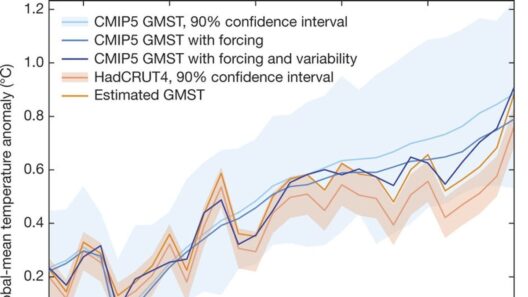In the intricate tapestry of existence, where every thread intertwines with another, global warming stands as a looming specter, casting a long shadow over human health and well-being. As temperatures rise, a delicate confluence of climatic factors threatens to unravel the very fabric of our health systems and individual resilience. The deterioration of our planet’s climate is no mere abstract concept; it is an existential threat that reverberates through the corridors of our lives, demanding urgent attention.
At the heart of this colossal challenge lies the interdependence of ecological balance and human health. The metaphor of a fragile web serves to illustrate this relationship. Just as a single strand removed from a spider’s web can compromise its integrity, so too can climate fluctuations disrupt the delicate equilibrium of the Earth’s systems, leading to profound health consequences for humanity.
Rising temperatures and the surge of extreme weather events are not isolated phenomena; they are harbingers of an array of health issues that are becoming alarmingly prevalent. Heat-related illnesses, such as heat exhaustion and heatstroke, become rampant as the mercury incessantly climbs. Vulnerable populations, including the elderly and individuals with pre-existing health conditions, are particularly susceptible. The metaphor of a furnace springs to mind; the relentless heat envelops its victims, searing their well-being while society remains largely passive.
Moreover, the proliferation of vector-borne diseases is intricately linked to shifts in climate patterns. The distribution of vectors like mosquitoes and ticks is expanding as they find favorable breeding grounds in warming climates. Diseases such as malaria, dengue fever, and Lyme disease are intensifying their grip on populations already grappling with inadequate healthcare infrastructure. This scenario elucidates a grim reality: our battle against pathogens is not merely a biological struggle but a socio-environmental one. As ecosystems shift, so do the pathogens that inhabit them, forging new frontiers for human suffering.
Water scarcity is another insidious consequence of global warming, weaving a disastrous narrative that undermines both physical and mental well-being. As glaciers and ice caps recede, freshwater sources dwindle. This phenomenon leaves millions without access to safe drinking water, fostering a hazardous environment conducive to waterborne diseases. The age-old adage “water is life” has never rung truer, for in the absence of clean water, health deteriorates and communities face the threat of collapse. The implications extend beyond mere physical health, exacerbating mental health disorders as individuals grapple with the uncertain future of their most basic needs.
Food security becomes a critical concern as well. Climatic disturbances affect crop yields, disrupting the delicate balance of supply and demand. Droughts and floods, driven by climate change, annihilate harvests, precipitating famines and malnutrition. The metaphor of a fragile ecosystem holds firm here; just as interdependent species rely upon one another, the human population relies on sustainable agricultural practices and climate stability. Disrupting this relationship jeopardizes not just individual health but the societal fabric as a whole.
Furthermore, the psychological ramifications of climate change cannot be overstated. The term “eco-anxiety” has emerged to encapsulate the pervasive dread many feel regarding the future of the planet. As communities suffer from the clutches of climate-induced catastrophes—wildfires, hurricanes, and flooding—individuals grapple with trauma and loss. Mental health, often relegated to the background in discussions of climate impact, demands an equal seat at the table. The emotional toll is staggering, and as the planet’s health declines, so too does our collective psyche.
The intersection of climate change and human health highlights the urgent need for integrated solutions. Public health initiatives must pivot towards a proactive stance, addressing the myriad repercussions of climate change on well-being. Preparatory measures against heatwaves can facilitate better outcomes for at-risk populations; community education can empower individuals to mitigate vector-borne disease risks. Moreover, mental health services must be included in climate adaptation plans, ensuring that individuals have the support to navigate the psychological challenges presented by environmental changes.
As we scrutinize the nexus of global warming and human health, the imperative for action becomes clear. Policymakers and community leaders must embrace a holistic approach that recognizes the interconnectedness of environmental stewardship and public health. Sustainable practices, innovative technologies, and comprehensive education must converge to safeguard both the planet and its inhabitants. Our survival hinges on fostering a cultural paradigm shift—one that champions sustainability and embraces innovation.
In conclusion, the impacts of global warming on human health are not mere footnotes in a broader narrative; they are central to the discourse on sustainability and survival. The metaphor of a house on fire captures the urgency we face: we cannot afford to watch the flames of climate change engulf our health. We must act—to extinguish the fires of neglect and inaction, to repair the fraying threads of our interwoven existence. Only through committed effort can we forge a future that is resilient, equitable, and healthy for generations to come.






